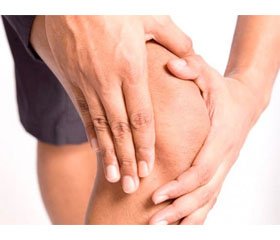The article was published on p. 69-70
Introduction. Glycoconjugates are one of the components of cells and extracellular matrix, its structure irreversibly change throughout the organs development, reflecting the formation of the organism as a whole. Lectins are the most informative factors that allow to identify glycoconjugates. The lectin receptors fundamental functions consist in the regulation of cells migration, differentiation, formation of cell-cell and cell-matrix interactions A.D. Lutsyk et al. (1989), A. Danguy (2004), J. Dennis et al. (2009), A. Varki et al. (2009), Sh. Yang et al. (2015). The study of the lectin receptors distribution in the articular cartilage in norm and under reactive changes modeling is an integral element to understand the joint formation regularities.
The aim of the study. To determine the morphology and reactivity of the articular cartilage by means of lectinhistochemistry application.
Materials and methods of research. Hip joint of white laboratory rats from the 1st to 90th day of their postnatal life were chosen as materials of the present study. The me-thod of M.A. Voloshyn (1981) was used as a model of antenatal antigen influence when studying joint reactivity. Use of experimental animals was guided by the «European Convention for the protection of Vertebrate Animals used for Experimental and Other Scientific Purposes» (Strasbourg, 18.03.1986). Joint fragments were fixed in the Buen liquid, decalcinated in a 20 % formic acid solution, dehydrated in an ascending battery of alcohols and chloroforms, immersed in paraffin. Peanut (PNA-HRP), vicia sativa (VSA-HRP), soybean (SBA-HRP), wheat germ (WGA-HRP), perca fluviatilis (PFA-HRP) agglutinins were used. Obtained results were processed using semiquantitative analysis by means of χ10, χ40, χ100 lens magnifications. Superficial (tangential) articular cartilage zone, middle (transitional) zone of articular cartilage and articular cartilage in the area of joint capsule marginal transitional zone were studied.
Results of the study. Articular surface is covered by synovial lining cells which continue directly from joint capsule to articular cartilage. Synovial lining cells are clearly delimited from articular cartilage by lamina which shows pronounced expression of all studied lectin receptors. Throughout the apical (luminal) surface of synovial lining cells during the whole observation period, there is an intensive deposition of lectin-binding sites. Glycoconjugates distribution in synovial layer that covers the articular cartilage did not significantly vary to 90th day and did not considerably change after antigenic influence. In the middle zone, there is an intense expression of β-D-galactose residues from the 14th to 90th day, α-D-manose residues — from the 30th to 45th day; α-L-fucose residues level decreases from the 1st to 7th day and trace concentrations of it are subsequently detected. Articular cartilage close by joint capsule marginal transitional zone revealed an intense expression of β-D-galactose and N-acetyl-D-galactosamine (NacGal) residues from the 14th to 90th day; α-D-manose and N-acetyl-D-glucosamine (GlcNAc) residues from the 30th to 90th day. In the middle zone, antigen influence leads to strong expression of N-acetyl-D-galactosamine (NacGal) residues on the 7th day, lack of α-D-manose residues from 30th to 45th day and an appearance of significant expression of N-acetyl-D-glucosamine (GlcNAc) residues on the 30th day. Articular cartilage in the area of joint capsule marginal transitional zone after antigen influence revealed an intense expression of β-D-galactose and N-acetyl-D-galactosamine (NacGal) residues on the 7th day, strong decrease of β-D-galactose residues from the 14th to 30th day and α-D-manose residues from 30th to 45th day, considerable expression of α-L-fucose residues from 30th to 45th day.
Conclusions. The surface of the articular cartilage is covered by synovial layer. Pronounced glycoconjugates expression in the synovial layer, in the middle zone and in the articular cartilage close by joint capsule marginal transitional zone is believed to be innate, protective, nonspecific, lectin mediated barrier between articular cartilage and synovia on the one hand and articular cartilage and joint capsule on the other hand. Changes in the glycoconjugates distribution after antigen influence may indicate the tension of immunobiological relationships between joint components and can be risk factor for joint pathologies.

